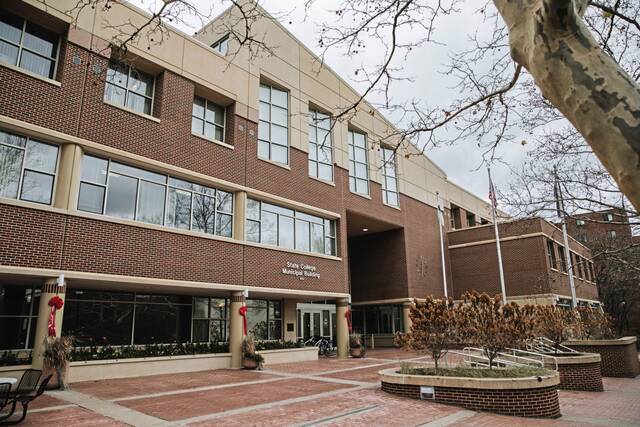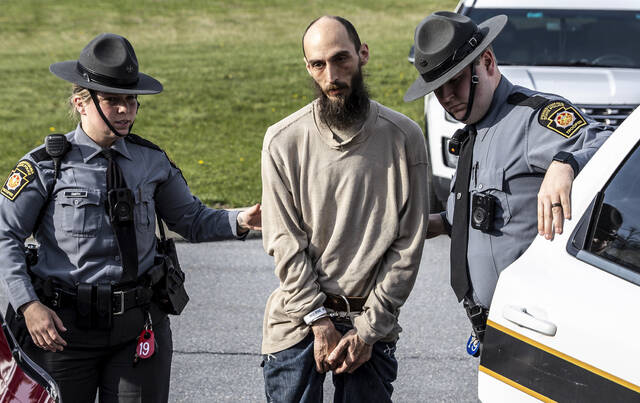As coronavirus cases continue to grow, hospitals across the state are doing what they can to prepare for a surge of critical patients that officials fear could overwhelm the health care system.
More than half of Pennsylvania’s 67 counties, however, have fewer than 20 intensive care beds, according to data released this month by the Kaiser Family Foundation.
At least 11 counties have no ICU beds, according to the data, and seven have no hospitals.
Hospitals across Allegheny County have a combined 580 ICU beds, according to the data culled by the San Francisco-based nonpartisan foundation. There are 50 beds in both Washington and Westmoreland counties. Fayette County has 15, and Indiana Regional Medical Center has a dozen beds. In Greene County, there are no ICU beds, according to the report.
“As you get to more rural areas, where populations are lower, hospitals have very rudimentary intensive care units if even intensive care units at all,” said Dr. Amesh Adalja, a Pittsburgh-based infectious disease expert and senior scholar at the Johns Hopkins University Center for Health Security.
The Kaiser foundation pulled the number of ICU beds from financial reports filed by hospitals across the country. Researchers included beds in intensive care, surgical intensive care, coronary care and burn intensive care units.
UPMC officials on Friday said there are 750 ICU beds across the health system’s 40 hospitals. Dr. Rachel Sackrowitz, chief officer of UPMC’s ICU Service Center, said there are another 450 beds that quickly can be converted to ICU beds.
“This is a tremendous ability to flex up in a very short period of time,” she said.
The system’s hospitals also are working on plans to be able to take on up to 200% of their individual capacities, she said.
“If one region in our system ends up getting hit hard, we can safely transfer patients, with or without covid-19, to hospitals in our system that are under less stress,” Sackrowitz said.
That idea will be key to keeping rural hospitals from becoming overburdened by critically ill patients, Adalja said.
“I’m hopeful that we won’t get to crisis mode in Pennsylvania, but we need to plan for that,” he said. “Especially small hospitals in rural areas — they need to think about their partnerships in other areas.”
Most rural hospitals already have plans in place with nearby larger hospitals when a patient needs critical care they are unable to provide, but those partner hospitals might be short on beds if there is a surge in patients.
“We need to make sure that every hospital has capacity,” Adalja said, stressing facilities should have a plan in place if their partner hospitals cannot take a transfer. “If you are a hospital without a proper intensive care unit, it’s important to think now about how to convert certain beds, make sure some ventilators are at hand in case you come to need them.”
The percentage of coronavirus patients requiring hospitalization has held steady at about 10%, which is on par with numbers seen in other states. Of the 3,394 cases identified statewide, 316 have required hospitalization.
Rachel Moore, a spokeswoman for the Hospital Association of Pennsylvania, said hospitals are working on “surge plans” to maximize the space they have for sick patients. She pointed to state officials urging facilities to postpone elective procedures and surgeries.
She said the health care community is also “exploring temporary and alternative care sites to help meet the potential surge during the covid-19 crisis.”
That could mean less conventional avenues, according to state Secretary of Health Rachel Levine.
“We are talking about possibly asking ambulatory surgical centers to (take in) less ill patients,” she said last week. “We’re talking about whether some acute beds could be created in hotels. All of that planning is happening right now.”
UPMC announced March 22 it was closing its ambulatory care centers as part of a decision to go forward with procedures that doctors have determined to be medically necessary and to “protect staff and preserve protective equipment,” UPMC spokesman Paul Wood said.
Since March 6, when the state identified its first positive covid-19 case, 110 people have required admission to an intensive care unit, and 64 have needed to be placed on a ventilator. Levine has said the state has about 3,400 ICU beds. The Kaiser numbers add up to just under 3,200 but do not include government-owned facilities, such as veterans’ hospitals.
State officials have not said where the hospitalizations have been.
State and local health officials have pleaded for weeks for residents to stay home, culminating in the closure of schools and non-life-sustaining businesses and a growing stay-at-home order that now includes 22 counties.
The hope is to slow the spread of the respiratory virus that has killed more than 2,000 in the United States and 30,000 worldwide. Without mitigation and prevention efforts, the number of sick people requiring hospitalization would far exceed the capacity of the state’s hospitals.
“If we do not do this, then we would anticipate a large surge of cases as was seen in Italy and other areas, and that could overwhelm our hospitals and health systems,” Levine said March 23. That was when the number of positive cases had just crested 1,000 and six people had died. By Sunday afternoon, the total had crested 3,000, and 38 people had died.
In New York City, which has become the epicenter of the pandemic in America, the potential for a surge that overruns hospitals is nearing reality.
By Sunday evening, more than 700 had died and 33,000 were sick with the virus, according to The New York Times.
NBC New York reported hospitalizations increased 13-fold over 10 days, and the city has erected 1,000-bed overflow facilities in all five boroughs and four surrounding counties. Gov. Andrew Cuomo has said the state is looking at four temporary hospital sites, including on college campuses and in the NY Expo Center.
In terms of projections, Cuomo said, “almost any scenario that is realistic will overwhelm the current capacity of the health care system,” NBC reported.








